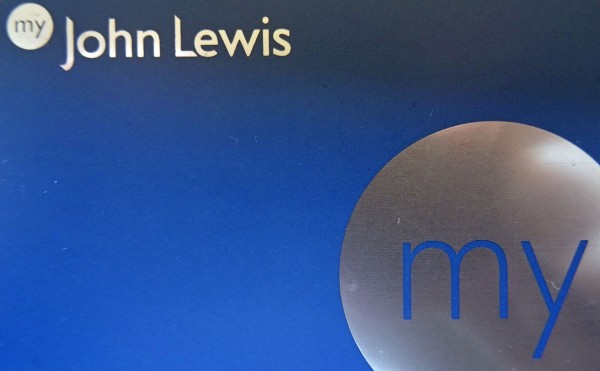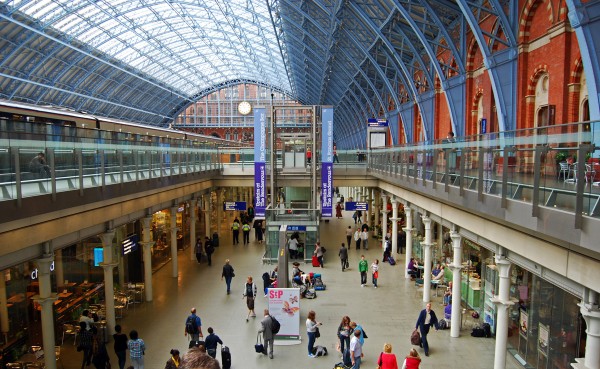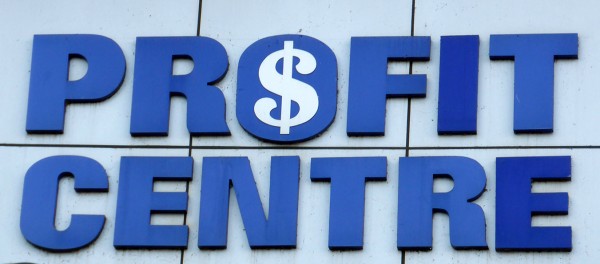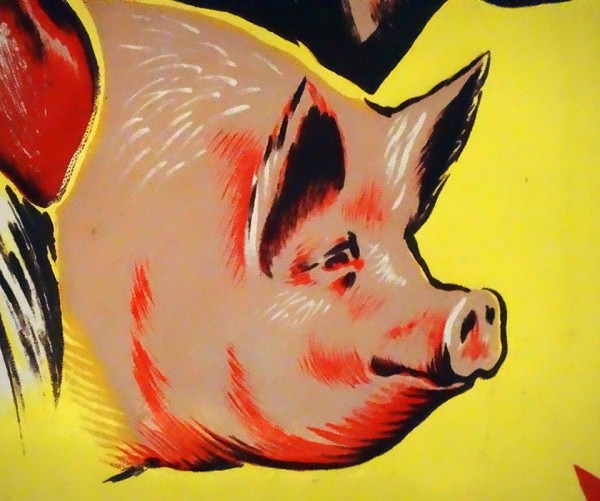 When you think about John Lewis, you think of a large department store. It is a department store celebrating its 150th anniversary. Many large retailers, such as John Lewis, have expanded their product range throughout their history and have grown organically, moving into larger and more prominent locations. What’s the latest location? St Pancras station.
When you think about John Lewis, you think of a large department store. It is a department store celebrating its 150th anniversary. Many large retailers, such as John Lewis, have expanded their product range throughout their history and have grown organically, moving into larger and more prominent locations. What’s the latest location? St Pancras station.
The idea of a click-and-collect store has grown in popularity over the past decade. With more and more people working and leading very busy lives, together with the growth of online shopping, it is the convenience of this type of purchase which has led to many retailers developing click-and-collect. Indeed, for John Lewis, 33% of its internet sales do come through click-and-collect. However, John Lewis is going a step further and its new strategy is reminiscent of companies like Tesco. If you just need to pop into Tesco to get some milk, you’re likely to go to the local Tesco express. The first mover advantage of Tesco in this market was vital.

John Lewis is unusual in that it is owned by its employees and this ownership structure has proved successful. Despite a long history, John Lewis has moved with the times and this latest strategy is further evidence of that. In today’s world, convenience is everything and that is one of the key reasons behind its new St Pancras convenience store. It will allow customers to purchase items and then collect them on their way to and from work – click-and-commute, but it will also provide customers with an easily accessible place to buy electronic equipment and a range of household goods. The retail director, Andrew Murphy said:
In the battleground of convenience, we are announcing a new way for commuters to shop with us … Customers spend a huge amount of time commuting, and our research shows that making life easier and shopping more convenient is their top priority.
This appears to be the first of many smaller convenience stores, enabling John Lewis to gain a presence in seemingly impossible places, given the normal size of such Department stores. For many people, commuting to and from work often involves waiting at transport hubs – one of the big downsides to not driving. So it seems sensible for such an established retailer to take advantage of commuters waiting for their train or plane to arrive, who have time to kill. The following articles consider this new direction for an old retailer.
John Lewis to open St Pancras convenience store BBC News (2/5/14)
John Lewis thinks small with convenience store The Guardian, Zoe Wood (2/5/14)
John Lewis to trial convenience store click-and-collect format at St Pancras Retail Week, Ben Cooper (2/5/14)
 Why is click and collect proving so popular? BBC News, Phil Dorrell (2/5/14)
Why is click and collect proving so popular? BBC News, Phil Dorrell (2/5/14)
 The rise of click and collect for online shoppers BBC News, Phil Dorrell (2/5/14)
The rise of click and collect for online shoppers BBC News, Phil Dorrell (2/5/14)
Questions
- What are the advantages and disadvantages of the organisational and ownership structure of John Lewis?
- How would you classify this new strategy?
- How do you think this new strategy will benefit John Lewis in terms of its market share, revenue and profit?
- Is it likely that John Lewis will be able to target new customers with this new convenience store strategy?
- How important is a first-mover advantage when it comes to retail? Using game theory, can you create a game whereby there is clear first mover advantage to John Lewis?
 Business performance is always affected by the economy and we can always look at the economic theory to explain why profits rise and fall. Some companies prosper during recession, whereas others decline and the key is to understand the economics behind the data. This blog takes a look at the performance of a variety of companies and asks you to think about the economic theory behind it.
Business performance is always affected by the economy and we can always look at the economic theory to explain why profits rise and fall. Some companies prosper during recession, whereas others decline and the key is to understand the economics behind the data. This blog takes a look at the performance of a variety of companies and asks you to think about the economic theory behind it.
The world of betting has grown significantly and the profits of companies in this market, while certainly linked to economic performance, is also dependent on sport results. Paddy Power has announced pre-tax profits of €141m for 2013, an increase from €139.2m, despite sporting results causing profit performance to fall. On the part of football clubs, Liverpool FC saw a loss emerge for the 2012-2013 financial year, whereas Newcastle’s profits rose by 900% to £9.9m. What factors can explain the vastly different performance (off and on the pitch) of these two clubs?
In the USA, Radio Shack has been forced to close 1100 stores. This is, in part, as a response to a change in the way we are shopping. More and more consumers are purchasing goods online and Radio Shack is therefore experiencing growing competition from online retailers. Sales fell by 10% last year and even during the fourth quarter sales continued to decline.
Companies based in the largest economy in Europe have also experienced declines in performance, showing that a strong performing country doesn’t imply the same for companies operating in it. RWE, Germany’s biggest energy provider, has not made a loss since 1949. However, in 2013, this company posted its first annual loss in over 60 years: a loss of £2.28bn. With energy being in constant demand and criticism being levelled at UK energy providers for the high profits they’re making, the economics behind these data is important.
In better news for a company, Thorntons has boasted a significant increase in pre-tax profits, with much of this due to strong trading in the months leading up to Christmas and a sensible business strategy, involving selling more in supermarkets. Thorntons has cut its number of stores, but its profitable position has been saved by a good business strategy and this is going to lead to significant investment by the company.
Another strong performance was recorded by Berkshire Hathaway, an investment firm run by Warren Buffett. The company made a profit of £11.6bn in 2013, a significant increase on its 2012 performance. It is the insurance, rail and energy parts of the business that have contributed to the big increase in profits.
These are just some recent examples of data on business performance and your job is to think about the economic theory that can be used to explain the varying performance of different companies.
Liverpool announce annual loss of £50m in new club accounts Guardian, David Conn (4/3/14)
Thorntons makes biggest manufacturing investment for 25 years Telegraph, Natalie Thomas (3/3/14)
Thorntons cashes in on the snowman Independent, Simon Neville (3/3/14)
Warren Buffett’s Berkshire Hathaway sees record profit BBC News (2/3/14)
Newcastle says ‘player trading’ helped increase profits to £9.9m BBC Sport (25/2/14)
RWE posts first annual net loss for over 60 years BBC News (4/3/14)
UK among RWE woes as it posts first annual loss since 1949 The Telegraph, Denise Roland (4/3/14)
Germany’s RWE slides into €2.8bn net loss for 2013 Financial Times, Jeevan Vasagar (4/3/14)
John Menzies profits hit by drop in magazine sales BBC News (4/3/14)
Fresnillo profits drop as gold prices and production falls The Telegraph, Olivia Goldhill (4/3/14)
Glencore 2013 profit rises 20% as copper production gains Bloomberg, Jesse Riseborough (4/3/14)
Questions
- In each of the cases above, explain the economic theory that can be used to explain the performance of the respective company.
- To what extent is a change in the market structure of an industry a contributing factor to the change in company performance?
- To what extent do you think a company’s performance is dependent on the performance of the economy in which it operates?
- Are the profits of a company a good measure of success? What else could be used?
 The growth of emerging economies, such as China, India and Brazil brings with it both good and bad news for the once dominant countries of the West. With growth rates in China reaching double digits and a much greater resilience to the credit crunch and its aftermath in these emerging nations, they became the hope of the recovery for the West. But, is it only benefits that emerge from the growth in countries like China?
The growth of emerging economies, such as China, India and Brazil brings with it both good and bad news for the once dominant countries of the West. With growth rates in China reaching double digits and a much greater resilience to the credit crunch and its aftermath in these emerging nations, they became the hope of the recovery for the West. But, is it only benefits that emerge from the growth in countries like China?
Chinese business has grown and expanded into all areas, especially technology, but countries such as the USA have been reluctant to allow mergers and takeovers of some of their businesses. Notably, the takeovers that have been resisted have been in key sectors, particularly oil, energy and technology. However, it seems as though pork is an industry that is less important or, at least, a lower risk to national security.
 Smithfield Foods is a US giant, specialising in the production and selling of pork. A takeover by China’s Shuanghui International Holdings has been approved (albeit reluctantly) by the US Committee on Foreign Investment. While the takeover could still run into obstacles, this Committee’s approval is crucial, as it alleviates concerns over the impact on national security. The value of the deal is some $7.1bn, including the debt that Shuangui will have to take on. While some see this takeover as good news, others are more concerned, identifying the potential negative impact it may have on prices and standards in the USA. Zhijun Yang, Shuanghui’s Chief Executive said:
Smithfield Foods is a US giant, specialising in the production and selling of pork. A takeover by China’s Shuanghui International Holdings has been approved (albeit reluctantly) by the US Committee on Foreign Investment. While the takeover could still run into obstacles, this Committee’s approval is crucial, as it alleviates concerns over the impact on national security. The value of the deal is some $7.1bn, including the debt that Shuangui will have to take on. While some see this takeover as good news, others are more concerned, identifying the potential negative impact it may have on prices and standards in the USA. Zhijun Yang, Shuanghui’s Chief Executive said:
This transaction will create a leading global animal protein enterprise. Shuanghui International and Smithfield have a long and consistent track record of providing customers around the world with high-quality food, and we look forward to moving ahead together as one company.
The date of September 24th looks to be the decider, when a shareholder meeting is scheduled to take place. There is still resistance to the deal, but if it goes ahead it will certainly help other Chinese companies looking for the ‘OK’ from US regulators for their own business deals. The following articles consider the controversy and impact of this takeover.
US clears Smithfield’s acquisition by China’s Shuanghui Penn Energy, Reuters, Lisa Baertlein and Aditi Shrivastava (10/9/13)
Chinese takeover of US Smithfield Foods gets US security approval Telegraph (7/9/13)
US clears Smithfield acquisition by China’s Shuanghui Reuters (7/9/13)
Go-ahead for Shuanghui’s $4.7bn Smithfield deal Financial Times, Gina Chon (6/9/13)
US security panel approves Smithfield takeover Wall Street Journal, William Mauldin (6/9/13)
Questions
- What type of takeover would you classify this as? Explain your answer.
- Why have other takeovers in oil, energy and technology not met with approval?
- Some people have raised concerns about the impact of the takeover on US pork prices. Using a demand and supply diagram, illustrate the possible effects of this takeover.
- What do you think will happen to the price of pork in the US based on you answer to question 3?
- Why do Smithfield’s shareholders have to meet before the deal can go ahead?
- Is there likely to be an impact on share prices if the deal does go ahead?
If you want to buy a newly released DVD, a cheaper option than buying off the high-street tends to be to buy online, in particular through Amazon, the world’s largest online retailer. However, Amazon has been facing increasing competition from another US giant, Netflix that has over 16 million subscribers and is looking at entering the British market. Arguably, in a response to this threat, Amazon has agreed to purchase Lovefilm, the online movie rental service that has grown rapidly over the past few years, with over 1.4 million members around the UK.
As of 2008, Amazon already had a 42% stake in the business, but as Lovefilm has been running into difficulties, their senior management team has been looking at the possibility of selling the remaining 58% share. Enter Amazon in a bid to cement and defend their place in the British market to companies such as Netflix. Below are a few articles concerning this takeover – more will be added, as further details emerge.
Amazon acquires Lovefilm for £200m Financial Times, Tim Bradshaw (20/1/11)
Can Lovefilm survive the streaming revolution? Telegraph, James Hurley (27/1/11)
Amazon takes full control of Lovefilm Guardian, Josh Halliday(20/1/11)
Amazon buys remaining stake in Lovefilm DVD service BBC News (20/1/11)
Amazon takes control of Lovefilm Broadband TV News, Julian Clover (20/1/11)
Amazon acquires Lovefilm, the Netflix of Europe Tech Crunch, Mike Butcher (20/1/11)
Questions
- What type of takeover is this and what are the main motives behind it?
- How are consumers likely to a) benefit and b) suffer from Amazon’s takeover bid for Lovefilm?
- Who are Amazon’s main competitors? (Think of all the products they sell.)
- Will the Competition authorities be interested in this takeover? Explain your answer.
- In which type of market structure would you place Amazon, Netflix and Lovefilm? Explain your answer.
Whilst the internet and technological developments provide massive opportunities, they also create problems. For some time now, newspapers have seen declining sales, as more and more information becomes available online. Type something into Google or any other search engine and you will typically find thousands of relevant articles, even if the story has only just broken. As revenue from newspaper sales falls, revenue has to be made somewhere else to continue investment in ‘frontline journalism’. The question is: where will this come from?
The Financial Times and News Corp’s Wall Street Journal charge readers for online access and we can expect this to become more common from May, when the Times and the Sunday Times launch their new websites, where users will be charged for access. Subscription to these online news articles will be £1 per day or £2 for weekly access. Whilst the Executives of the Times admit that they will lose many online readers, they hope that the relatively low price, combined with a differentiated product will be enough of an incentive to keep readers reading.
Critics of this strategy argue that this a high risk strategy, as there is so much information available online. Whilst the BBC does plan to curtail the scope of its website, the Times and Sunday Times will still face competition from them, as well as the Guardian, the Independent, Reuters, etc., all of whom currently do not charge for online access. However, if you value journalism, then surely it’s right that a price should be charged to read it. Only time will tell how successful a strategy this is likely to be and whether we can expect other online news sites to follow their example.
Times and Sunday Times websites to charge from June (including video) BBC News (26/3/10)
Murdoch to launch UK web paywall in June Financial Times, Tim Bradshaw (26/3/10)
Times and Sunday Times websites to start charging from June Guardian, Mercedes Bunz (26/3/09)
News Corp to charge for UK Times Online from June Reuters (26/3/10)
Murdoch-owned newspaper charges for content BBC News (14/1/10)
Questions
- Why have newspaper sales declined?
- How might estimates of elasticity have been used to make the decision to charge to view online articles?
- ’If people value journalism, they should pay for it.’ What key economic concepts are being considered within that statement?
- Why is charging for access to the Times Online viewed as a high-risk strategy?
- What are the advantages and disadvantages of this strategy? To what extent do you think it is likely that other newspapers will soon follow suit?
- Which consumers do you think will be most affected by this strategy?
- In what ways might non-pay sites gain from theTimes’ charging policy?
- Would you continue to read articles from the Times linked from this site if you had to pay to access them? If so, why? If not, why not? (We want to know!!)
 When you think about John Lewis, you think of a large department store. It is a department store celebrating its 150th anniversary. Many large retailers, such as John Lewis, have expanded their product range throughout their history and have grown organically, moving into larger and more prominent locations. What’s the latest location? St Pancras station.
When you think about John Lewis, you think of a large department store. It is a department store celebrating its 150th anniversary. Many large retailers, such as John Lewis, have expanded their product range throughout their history and have grown organically, moving into larger and more prominent locations. What’s the latest location? St Pancras station. Why is click and collect proving so popular? BBC News, Phil Dorrell (2/5/14)
Why is click and collect proving so popular? BBC News, Phil Dorrell (2/5/14) The rise of click and collect for online shoppers BBC News, Phil Dorrell (2/5/14)
The rise of click and collect for online shoppers BBC News, Phil Dorrell (2/5/14)


